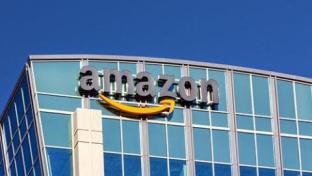CGP predicts anemic holiday growth; strongest/weakest categories will be...

Despite September’s solid month-to-month results, consumers are pivoting to slower spending as holiday approaches.
That’s according to retail research and consulting firm Customer Growth Partners (CGP). The company 22nd annual holiday forecast calls for a sluggish 2.1% year-over-year increase in holiday sales, to $928 billion, up from $909 billion in 2022, as the Covid era’s “sugar high” wears off.
After two years of warp-speed growth, consumer spending on goods is easing to near-normal historic rates — and then some, noted CGP president Craig Johnson. The firm’s forecast of 2.1% growth would mark the slowest holiday growth since 2012. It also is lower than some other forecasts, including the 3.5% increase predicted by Mastercard and Bain’s forecast for a 3% gain.
“The sharp deceleration in retail growth is due to stubborn inflation in many sectors, spiking interest rates, a year-over-year decline in Covid-era Federal stimulus, and the ongoing rotation of consumer spending from goods to services,” Johnson said.
The 2.1% growth — well below the 10-year compound annual growth rate of of 5.1% — shows a sustained slowdown from holiday 2021’s stellar 13% pace and 2022’s 5.5% growth, both reached in the post-Covid spending rebound. (CGP’s forecast for the November-December holiday period spans all categories except autos, gasoline and restaurants, based on U.S. Census Bureau retail data.)
The steep drop in the housing market is causing sales of big-ticket items at home furnishings and home improvement stores to languish, said Johnson. Discretionary items are particularly vulnerable this year, as lower-income households face rising credit card interest rates, lingering inflation in key sectors and the partial resumption in student loan payments.
But Johnson also had some good news for retailers.
“Most consumers still have solid household balance sheets, with the Fed’s Household Debt Service Ratio still in the healthy 9.8% range —despite the recent rise in revolving debt,” he said. “Employment levels also remain strong, notwithstanding continued weak labor force participation. Unless inflation spikes again, the mostly solid consumer fundamentals suggest a 2024 recession is less likely than more likely.
Here are some additional highlights of CGP’s 22nd Annual Holiday forecast.
•Reflecting steep growth in the beauty market, the health and personal care category will rise by 5.2% from last year.
•Apparel stores are gaining strength, bolstered by teen and young adult demand, and are predicted to see 2.5% growth.
•General merchandise stores are slowing, reaching barely a 1% increase for holiday.
•The e-commerce/direct-to-consumer sector continues to slow, but will still post a solid gain of 5.1% for holiday.
•Food and beverage sector continues to enjoy moderate inflation, while the adult beverages (alcoholic and non-alcoholic) are humming along, boosting growth by 3.1%.
Weaker categories include:
•Home furnishings, down 6.0%;
•Home improvement, down 4.0%;
•Miscellaneous, down 3.3%;
•Sports/toys/hobbies, down 2.8%; and
•Consumer electronics & appliances: down 2.5%.
"Retail growth is clearly slowing as we enter the critical holiday shopping season,” said Johnson. “But if inflation eases going forward, and if job growth—and real wages—rise in 2024, we may well see retail sales return to a healthy pace of 5% to 6%.”
CGP is a research and consulting firm serving the Retail industry. Founded in 2001, the company has conducted proprietary and public forecasts of annual, back-to-school and holiday retail sales ever since. CGP’s 14-researcher team leads primary research weekly in over 100 major shopping venues nationwide.



